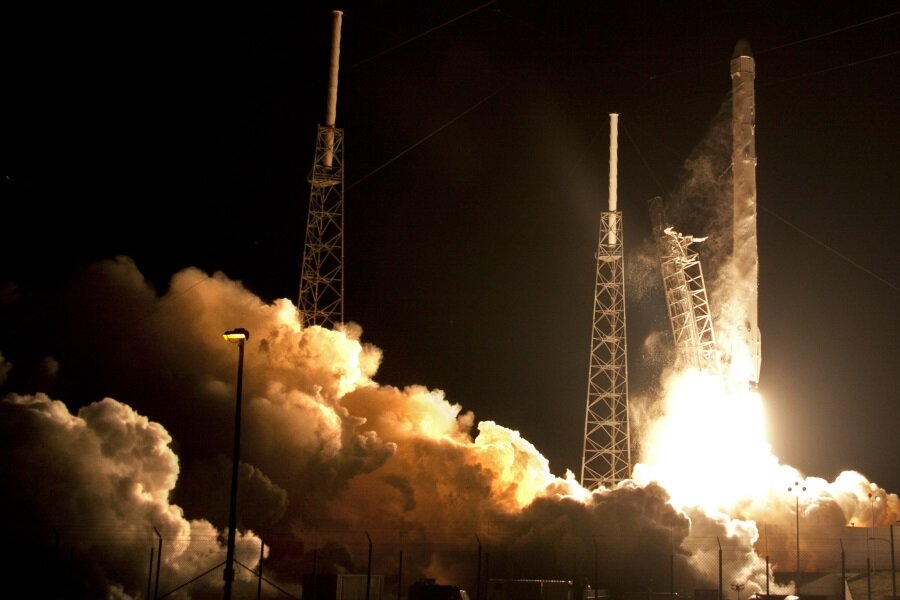Undaunted by crash landing, SpaceX says reusable spacecraft are coming soon
Loading...
SpaceX, the California-based orbital rocket launch company, has been sending unmanned capsules to the International Space Station since 2012, but its current mission is much more ambitious.
The private space company wants to be able to recover and reuse not only the Dragon cargo ship used to carry supplies to the ISS, but also the Falcon 9 rocket used to send the cargo into orbit.
Using reusable rockets will allow SpaceX to cut the cost of sending supplies into orbit by a factor of 100, says chief executive officer Elon Musk.
It’s not hard to see why. It costs about $61 million to launch a Falcon 9, and early launches weren’t recoverable. The rockets were designed to splash down in the ocean, but couldn’t survive the heat of reentering Earth’s atmosphere. Since 2011, SpaceX has been working to let the Falcon 9 land using thruster power – the rocket is supposed to take off, deliver the Dragon capsule to orbit, then deorbit and land upright on a floating barge about the size of a football field.
Last week, SpaceX had a successful launch – the Falcon 9 brought the Dragon to orbit without a hitch – but didn’t quite stick the landing. The rocket maneuvered successfully from 50 miles above the Earth to the barge floating below, but came down at an angle, striking the barge’s surface and exploding on impact. Mr. Musk, who released a video of the unsuccessful landing on Friday, said the rocket’s stabilizing fins might have run out of fluid during the descent, and that the main thrusters couldn’t compensate for the loss of stabilization.
The company plans to launch another test flight next month, with additional hydraulic fluid for the stabilizers. If all goes according to plan, the Falcon 9 will land upright on the barge, and SpaceX will be able to refuel it and reuse it for another flight. That would dramatically cut the cost of spaceflight. (For comparison, the cost of each Saturn V launch during the Apollo program was $375 million, or almost $2.3 billion in today’s money.)
SpaceX isn’t the only company working to cut the cost of spaceflight. Virginia-based Orbital Sciences is developing an expendable rocket that can launch heavy payloads into low-Earth orbit, and the British company Virgin Galactic is working on being able to launch cargo – and, eventually, space tourists – into orbit in the future. Both companies suffered major setbacks last fall when Orbital Science’s Antares rocket exploded on the launch pad and Virgin Galactic’s SpaceShipTwo crashed, killing one of the two test pilots aboard.
SpaceX’s unsuccessful landing this week isn’t much of a setback. Although the rocket itself was lost, the landing barge is intact, and the company gained useful data for future tests. If next month’s landing is successful, it will be a big step toward making commercial spaceflight cost-effective.








